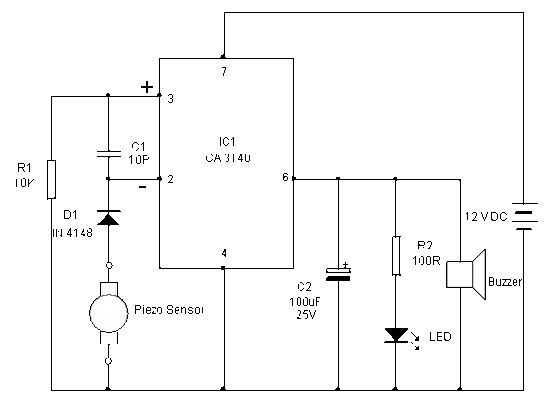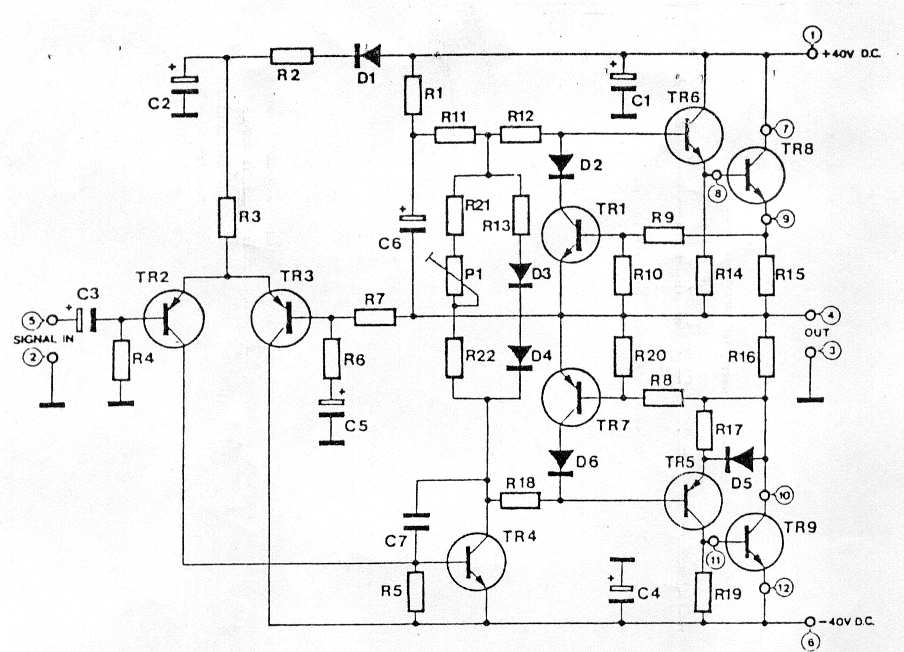Whether you’re talking about a home cinema or a computer system, it’s very often the case that the various elements of the system have to be turned on or off in a quite specific order, or at least, automatically. Constructing this sort of automation system is well within the capability of any electronics enthusiast worthy of the name, but in this ‘all-digital’ age, most of the circuits of this type to be found in amateur electronics magazines or web-sites use a microcontroller. Even though that is indeed a logical solution (in more ways than one!), and you might even say the easiest one, it does pose problems for all those people who don’t (yet) have the facilities for programming these types of IC. So we decided to offer you now an approach that’s very different, as it only uses a simple, cheap, commonly-avail-able analogue integrated circuit, which of course doesn’t have to be programmed. Our project in fact uses as it’s ‘brain’ an LM3914, a familiar IC from National Semiconductors, usually used for driving LED VU (volume unit) meters.
Circuit diagram :
Power-up/down Sequencer Circuit Diagram
Before taking a look at the circuit for our project, let ’s just remind ourselves that the IC has one analogue input and ten out-puts intended for driving LEDs. It can operate in ‘point’ mode, where the LEDs light up in turn, from first to last, depending on the input voltage, but only one LED is lit at any given time. Alternatively it can operate in ‘bar’ mode (this is the mode normally used for VU meters), and in this case, the LEDs light up one after the other, in such a way as to create a strip of light (bar) that is longer or shorter according to the input voltage. This is the mode selected for the LM3914 in the circuit described in some detail below.
So as to be able to control the AC powered equipment our sequencer is intended to manage, we are using solid-state relays — four, in our example, though you can reduce or increase this number, up to a maximum of ten. Since the input devices in solid-state relays are LEDs, they can be driven directly by the LM3914 outputs, since that’s exactly what they’re designed for. As only four relays are available, these are spread across out-puts L2, L4, L6, and L8, but you can choose any arrangement you like to suit the number of relays you want to use.
Resistor R7 connected to pin 7 of the LM3914 sets the current fed to the LEDs by the LM3914 outputs. Here, it’s been set to 20 mA, since that is the value expected by the solid-state relays chosen. The input voltage applied to pin 5 of the LM3914 is none other than the voltage present across capacitor C1 — and this is where the circuit is ingenious. When the switch is set to ‘on’, C1 charges slowly through R5, and the LEDs of the solid-state relays on the outputs light one after another as this voltage increases; in this way, the units being controlled are powered up in the order you’ve chosen. To power-down, all you have to do is flip the switch so that C1 discharges through R5, and the LEDs go out in the reverse order to that in which they were lit, in turn powering down the units connected to the solid-state relays. Easy, isn’t it? If you’re not happy with the sequence speed, all you need do is increase or reduce the value of R5 in order to alter the speed one way or the other.
The circuit needs to be powered from a volt-age of around 9 to 12 V, which doesn’t even need to be stabilized. A simple ‘plug-top’, ‘wall wart’ or ‘battery eliminator’ unit will be perfect, just as long as it is capable of supply-ing enough current to power all the LEDs. As the LED current is set by R7 to 20 mA per LED, it’ll be easy for you to work out the current required, according to the number of solid-state relays you’re using.
In our prototype the type S216S02 relays from Sharp were used, mainly because they proved readily available by mail order. They also have the advantage of being compact, and their switching capacity of 16 A means you can dispense with a heatsink if you’re using them for a computer or home cinema system, where the current drawn by the vari-ous units can be expected to remain under 1 A. These solid-state relays must be protected by a fuse, the rating of which needs to be selected according to the current drawn by the devices being powered.
Also note the presence across the relay terminals of a VDR, also known as a GeMOV or SiOV, intended to protect them from any spurious voltage spikes. You can use any type that ’s intended for operation on 250 VAC without any problem. The values of fuses F1 to F4 are of course going to depend on the load being protected.
Construction of the circuit shouldn’t present any particular difficulty, but as the solid-state relays are connected directly to AC power, it is essential to install it in a fully-insulated case; the case can also be used to mount the power outlet sockets controlled by the circuit. Note that sockets are female components.
Let’s just end this description with the sole restriction imposed by our circuit — but it’s very easy to comply with, given the intended use. In order to remain triggered, the solid-state relays must carry a minimum holding current, which is 50 mA in the case of the devices we’ve selected. In practical terms, this just means that each of the devices powered by our sequencer must draw at least 50 mA, or in other words roughly 12 VA at 230 VAC, or 25 VA at 120 VAC.
Author :Christian Tavernier
















 MIC2941 regulator has guaranteed 1.25A output
MIC2941 regulator has guaranteed 1.25A output






